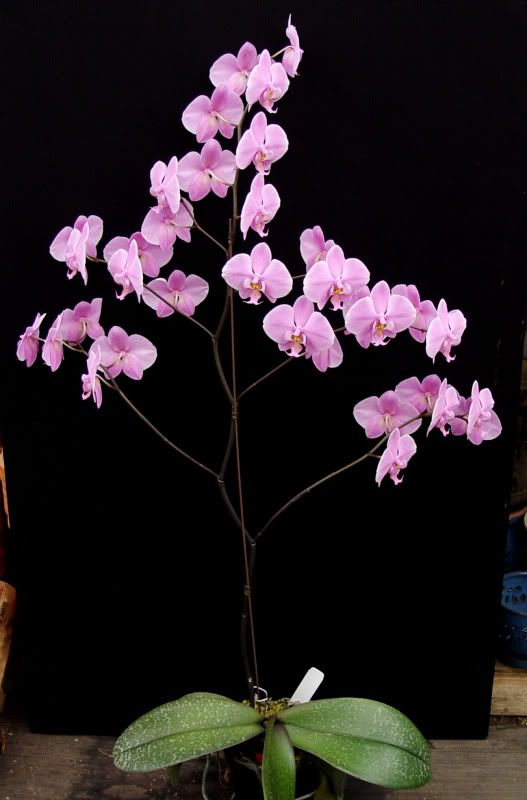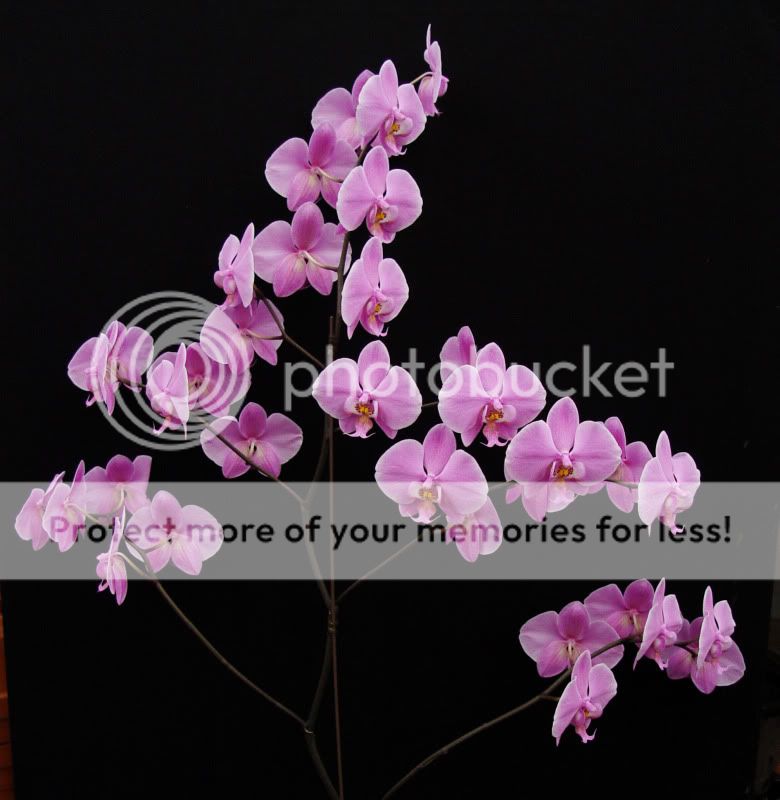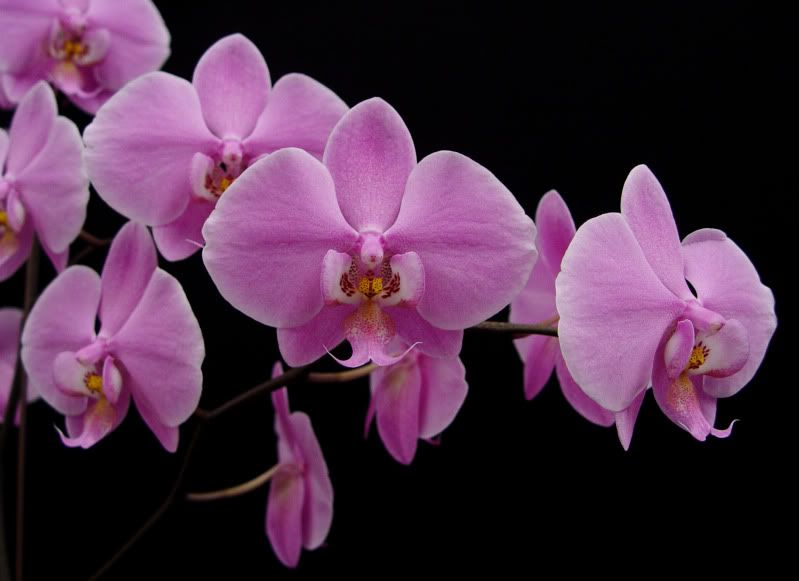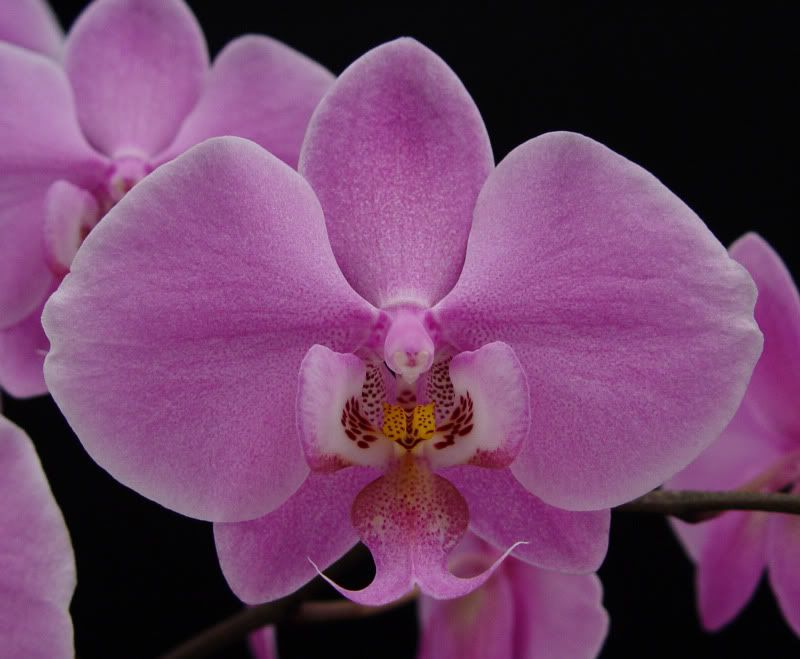This is a very nice plant with a stunning display! Is it fragrant?
Honestly, if I were there, I would've exercised the need to have it formally identified by a taxonomic authority or the AOS task force.
In addition to the unusuall size, color (although this variety is more heavily saturated than the type), and form for this species, the leaves aren't as dark and richly patterned as many schillerianas, but could certainly fall into the range of variation for the species- I'm not sure. When you're not sure, you should ask someone that knows, right?
This is important in maintaining integrity in the breeding line and award system. No offense to Doc Q and the OL gang, nothing but respect from me guys!!! But like a paph spicerianum/Bruno discussion in another thread, sometimes the source of the plants mislabels on purpose plants that have a touch of something else in the lineage to give it a competetive and commercial edge. And someone has said several times that unless you grab it off the tree, you have no idea for sure what it really is.
Can we separate diploids from polyploids from aneuploids at the judging table. No way. It's unreasonable to even consider that... unless you're volunteering to screen everyone's plants of course.

It sounds fair on paper, but I doubt the suggestion would ever leave the gate.
Is funky-ploidy/selective breeding bad? Depends on your viewpoint. Hermann Pigors breeds to conserve the natural concept of a species. There's certainly something to be said for that. But would I buy his lab raised but jungle-looking spicerianums OR a line bred one from Hausermann's OR a "Bruno-contaminated" one from Asia? We have some of each- Hausermann's are my faves. At some point, each individual draws a line for themsleves.
Actually, Hermann's classic example of his breeding ideas
IS Phal schilleriana. For a long time, 'Pink Butterfly' was the gold standard for schillies. We have that clone. It's nice for sure. But it doesn't branch as readily as a lot of schillies do and it's not fragrant (or not much).
As for size, yes there should be improvement. But I'm not in the school that "that plant is 0.2 cm smaller than previous awards, so it's outa here." Usually the measurement folks key in on is horizontal natural spread (or vertical for tall things like sanderianums etc). Well, who cares if it's 0.2 cm smaller in NS if the petals are 20% fatter or the dorsal is wide enough to shovel snow. Size isn't always determined by the ruler- proportion also falls in the size department in my eyes. Would you rather have a Paph rothschildianum that's 35 cm in HNS and has spaghetti-width petals and narrow sepals, or a 32 cm one with fat, chunky petals and sepals? The difference in fullness and heavy "feel" of the flower is dramatic. Some say "size is only ten points"- that's true. Other say "yeah, but it's the
first ten". Not true IMO. Even if you give a plant zero points for size, there are 90 left- it could get an FCC (but perfection in both color and form is a toughie).
Bottom line: Rob, you have a very nice Phal there- it deserved to be awarded.
-Ernie











